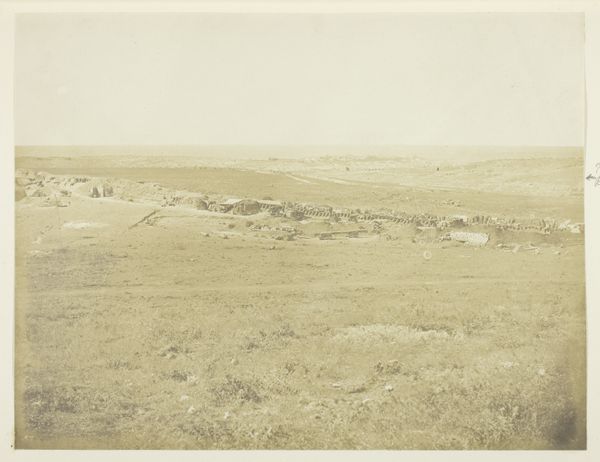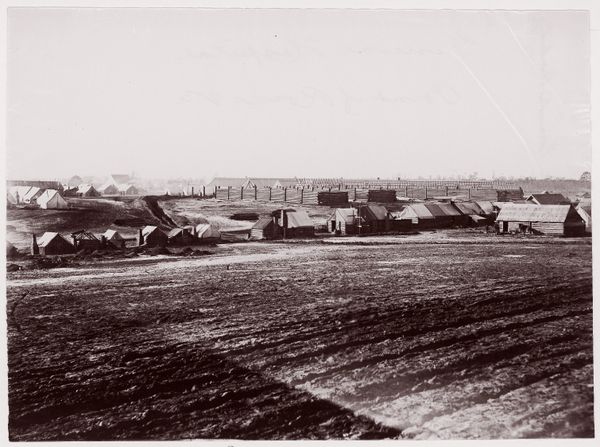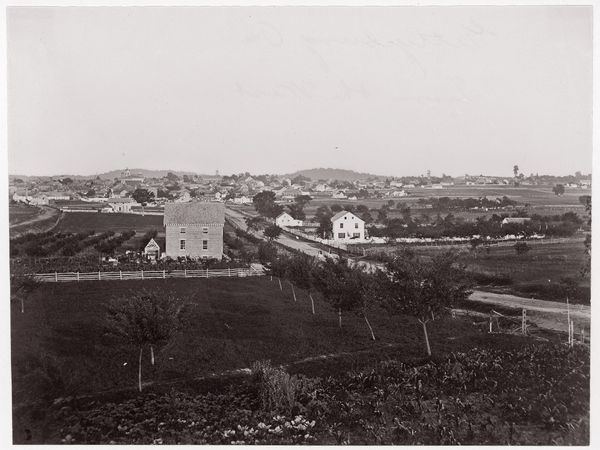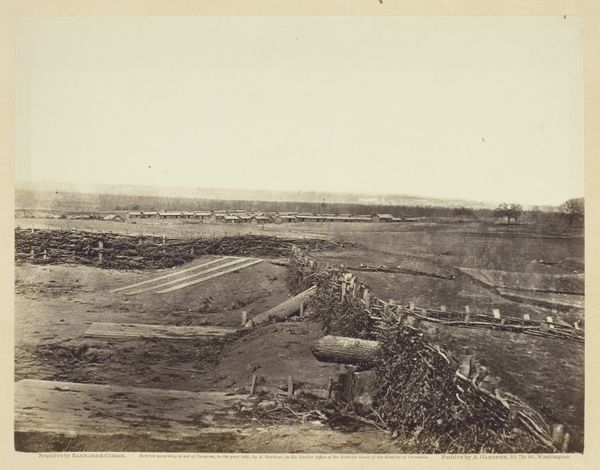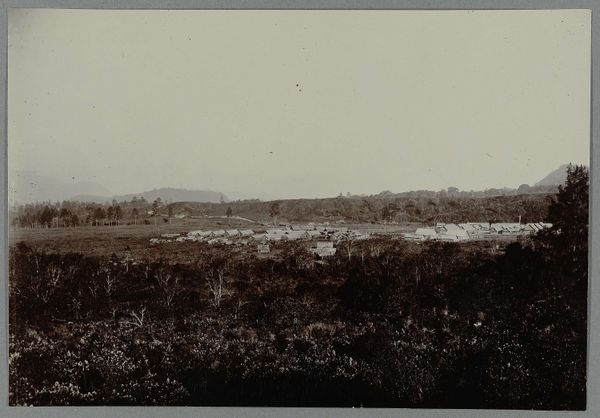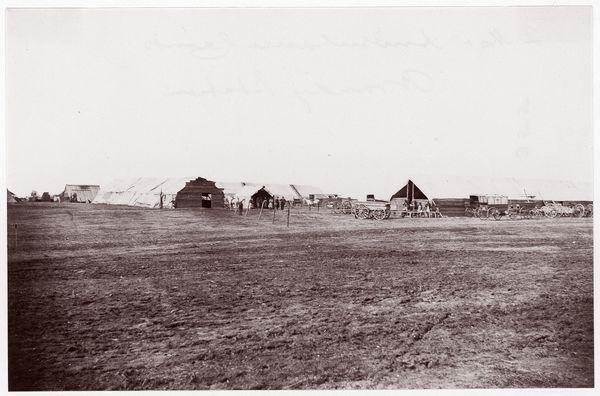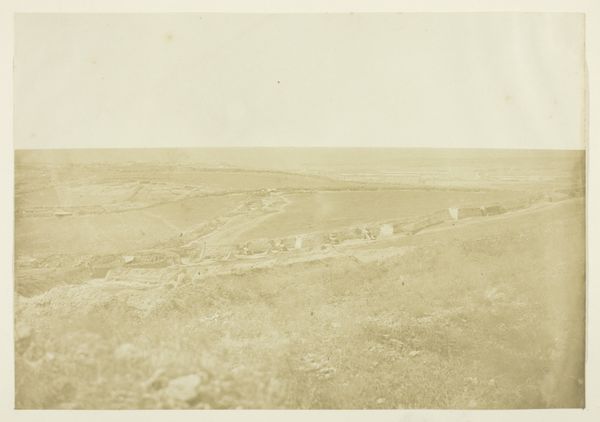![[Gettysburg, Pennsylvania from Seminary Ridge] by Timothy O'Sullivan](/_next/image?url=https%3A%2F%2Fd2w8kbdekdi1gv.cloudfront.net%2FeyJidWNrZXQiOiAiYXJ0ZXJhLWltYWdlcy1idWNrZXQiLCAia2V5IjogImFydHdvcmtzLzA2ZGI3NDQ0LTM5ZTAtNGU5YS1iNzgxLTA2MmQ2MjA0ZmE5Yy8wNmRiNzQ0NC0zOWUwLTRlOWEtYjc4MS0wNjJkNjIwNGZhOWNfZnVsbC5qcGciLCAiZWRpdHMiOiB7InJlc2l6ZSI6IHsid2lkdGgiOiAxOTIwLCAiaGVpZ2h0IjogMTkyMCwgImZpdCI6ICJpbnNpZGUifX19&w=3840&q=75)
[Gettysburg, Pennsylvania from Seminary Ridge] 1863
0:00
0:00
photography, gelatin-silver-print
#
black and white photography
#
war
#
landscape
#
outdoor photograph
#
outdoor photography
#
photography
#
gelatin-silver-print
#
monochrome photography
#
realism
Copyright: Public Domain
Curator: Timothy O'Sullivan captured this vista of Gettysburg, Pennsylvania, from Seminary Ridge in 1863, creating a gelatin-silver print. What strikes you immediately about this landscape? Editor: There's a bleakness, a stark silence that pervades the image. Despite being a landscape, it's impossible to ignore the implicit human presence. It’s heavy with unspoken stories. Curator: I'm drawn to the act of image-making itself at this historical moment. Think about the technology involved. O'Sullivan would have lugged heavy equipment to document the aftermath of a devastating battle. Photography as a tool for witnessing and recording, becoming essential for shaping public perception. Editor: Absolutely. The ridge itself takes on symbolic weight. We see it as a vantage point, a place of observation. In psychological terms, landscapes reflect inner states; here, the sparse and quiet setting amplifies themes of loss and memory related to war. Curator: The materiality, the gelatin silver print—this particular medium allowed for greater detail and tonal range, which further enhanced realism. It brings home the stark reality for a society trying to process war. This process democratizes tragedy. Editor: Considering the symbolic dimensions further, think about how the Civil War echoes foundational narratives. The fallen are almost automatically integrated into notions of national sacrifice—a kind of solemn mythology building. And photography, in its apparent truthfulness, becomes integral to these narrative constructions. Curator: Precisely. We consume and reproduce such images and their symbolic power deepens with each generation that wrestles with war. But do we understand the social dynamics surrounding the making of war images, how power relations shape their distribution, and meaning making? Editor: These considerations give us ways to comprehend how that visual history continues to affect and direct our modern values. A disquieting, compelling thought to end with.
Comments
No comments
Be the first to comment and join the conversation on the ultimate creative platform.
